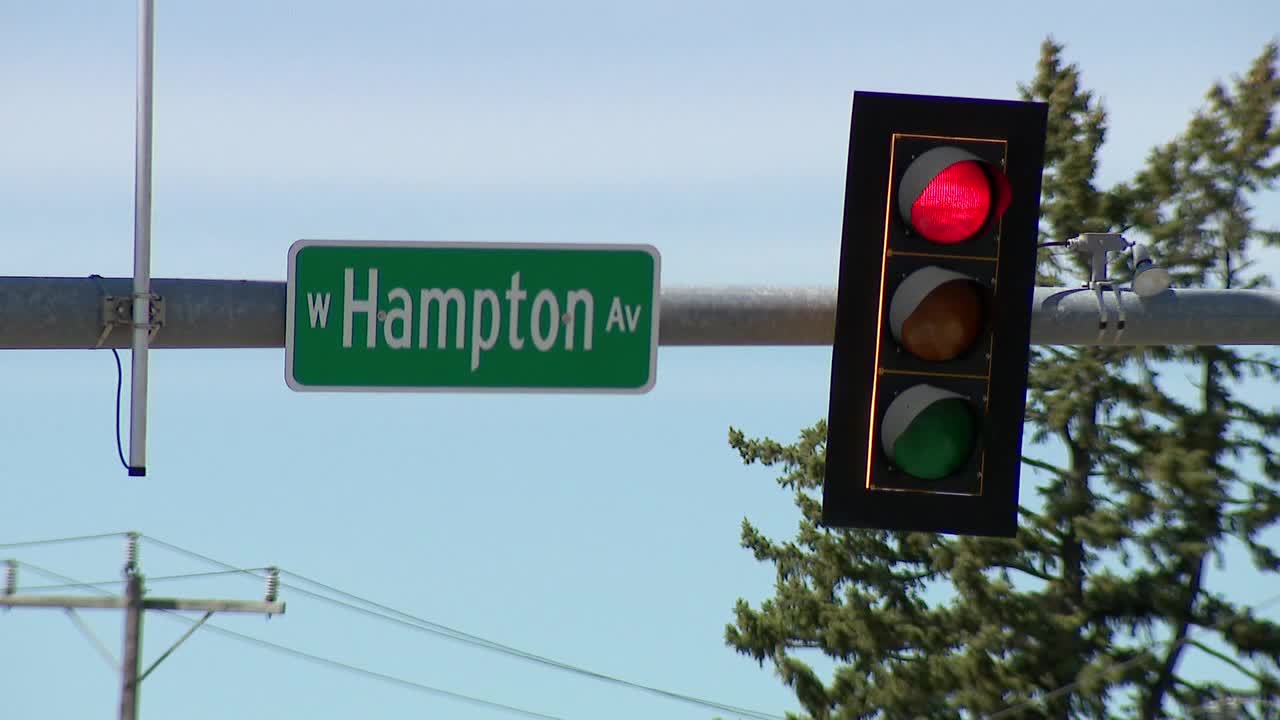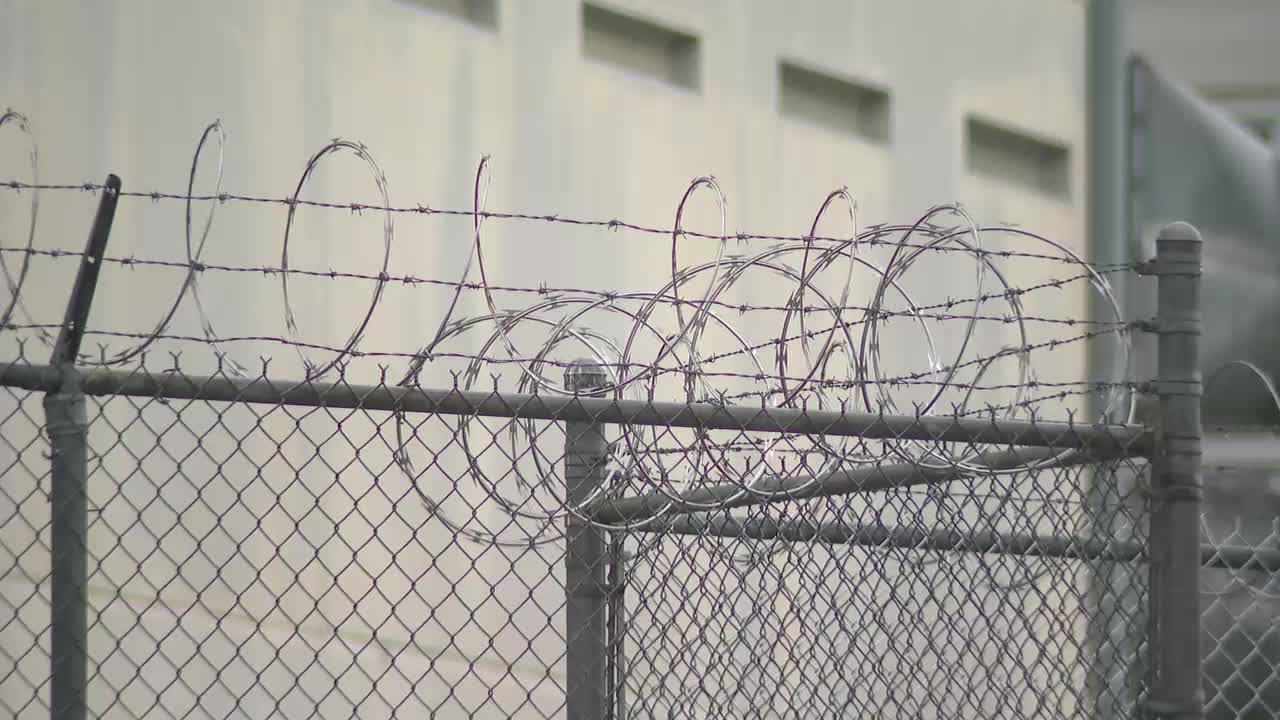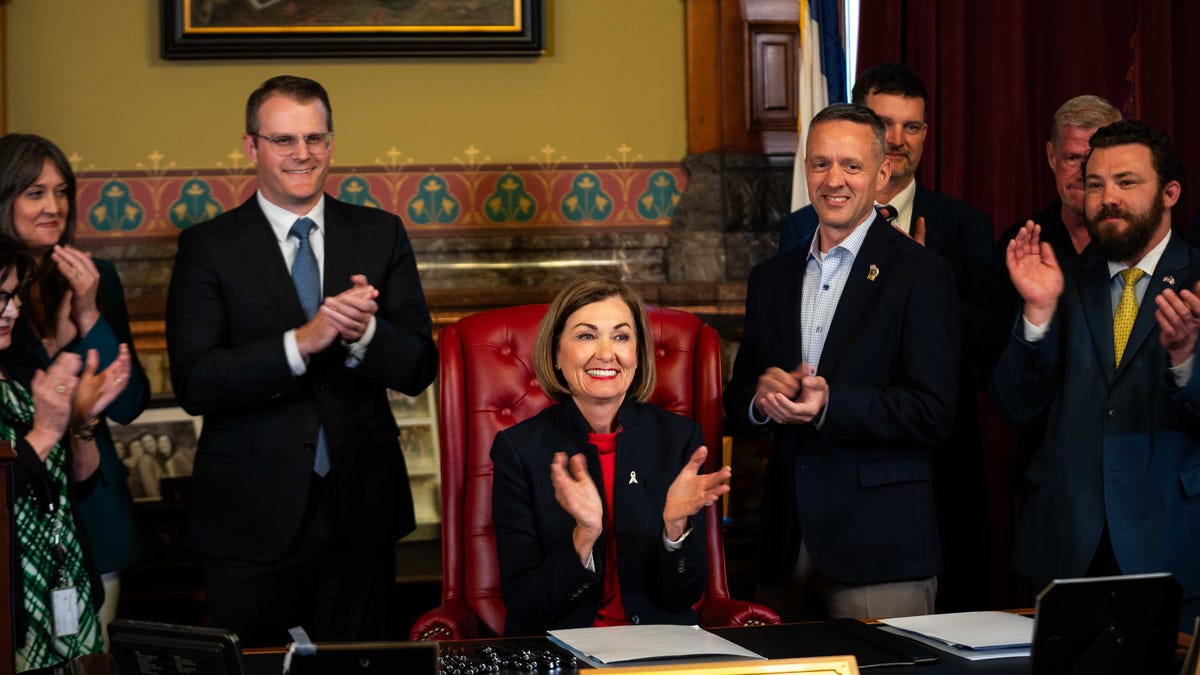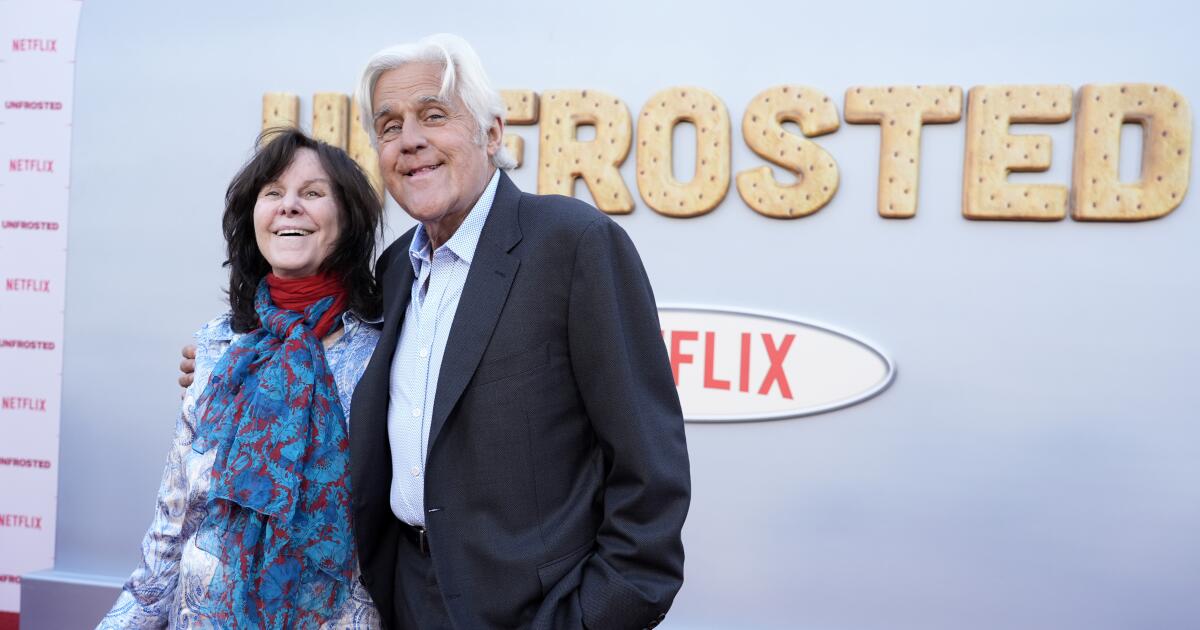World
Biden, Japan leader Kishida announce stronger defence ties in state visit
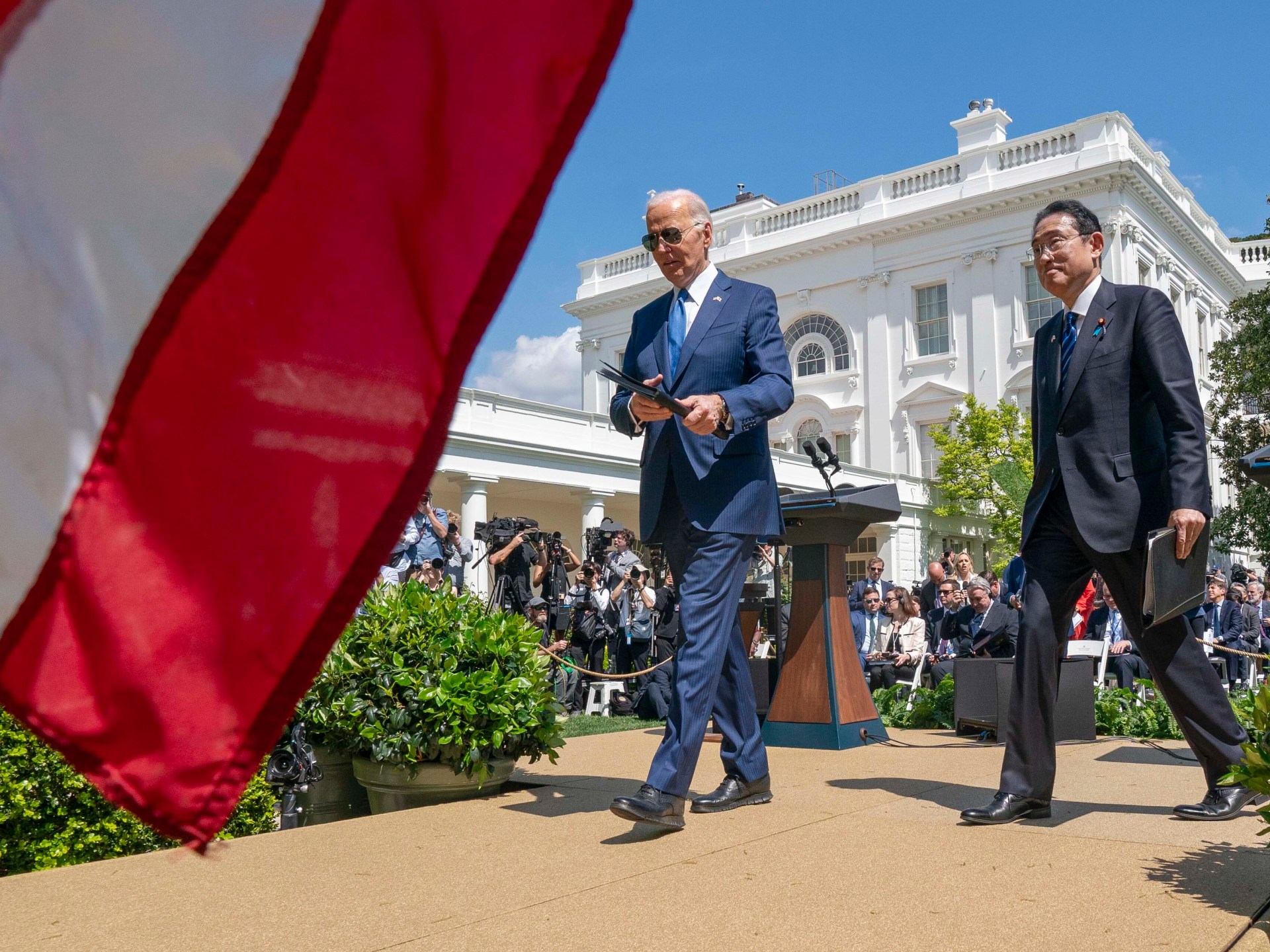
United States President Joe Biden has welcomed Japanese Prime Minister Fumio Kishida to the White House, with an upgrade in defence ties topping the agenda.
The meeting is only the fifth official state visit of Biden’s presidency, with the lavish events typically reserved for only the most formidable of US allies.
Moreover, the visits underscore an administration’s strategic priorities, with three of the four previous state dinners – South Korea, India and Australia – emphasising the Indo-Pacific region to counter what US officials describe as China’s increased military and economic assertiveness.
Beijing also loomed large on Wednesday, in a visit that began with Biden welcoming Kishida on the South Lawn of the White House. Biden hailed the “unbreakable” partnership between Japan and the US as “a cornerstone of peace, security, prosperity, in the Indo-Pacific and around the world”.
Kishida referenced the iconic cherry blossom trees that typically bloom in Washington, DC in spring, and were first gifted to the US by Japan in 1912.
“I am confident that the cherry blossom-like bond of the Japan-US alliance will continue to grow even thicker and stronger in the Indo-Pacific and in all corners of the world,” Kishida said.
The two men went on to discuss as many as 70 cooperation agreements in defence, space and technology during a meeting in the oval office, according to officials who previewed the event.
At a joint press conference, Biden announced what he described as the most significant upgrade in military ties since the alliance between the two countries began.
He said the countries would modernise their military command and control structures in Japan to increase interoperability and planning. He also said that Japan, Australia and the US will create a network of air missiles and defence architecture, in the latest move to increase coordination of allies in the region.
The US has about 38,000 troops stationed in Japan, with another 11,000 on US vessels in Japanese waters.
The move is the latest by the US to increase cooperation with key allies in the region.
Beyond strengthening the so-called Quad strategic grouping, which includes the US, India, South Korea and Australia, the Biden administration has also created the so-called AUKUS security partnership with Australia and the United Kingdom, which is helping Australia acquire nuclear-powered submarines.
The leaders of the US, Japan and the Philippines – another key US ally in the region – are also set to hold a first-of-its-kind trilateral meeting on Thursday.
For its part, Beijing has repeatedly accused Washington of “Cold War thinking” that has ratcheted up tensions. Nevertheless, both Biden and Chinese leader Xi Jinping have shown a willingness to engage diplomatically in recent times, with the two leaders holding a call earlier this month, their first direct communication since November.
The White House also announced on Wednesday a plan for Japan to join future US space missions, with Biden promising that a Japanese astronaut “will become the first non-American ever to land on the Moon”.
The two countries also announced a joint partnership to accelerate the development and commercialisation of nuclear fusion, an extremely high-yield, low waste form of energy production that scientists have been trying to harness for decades.
Speaking at the news conference, Kishida said that he and Biden had also discussed North Korea, which has continued to test more powerful missiles in recent years, as well as security in the Taiwan Strait, the waterway off of the self-governing island that China claims as its own.
He drew a direct link between Russia’s war in Ukraine and concerns in the Indo Pacific region.
“Unilateral attempts to change the status quo by force or coercion is absolutely unacceptable, wherever it may be,” Kishida said.
“Regarding Russia’s aggression of Ukraine … Ukraine today may be East Asia tomorrow,” Kishida said.
When asked about a planned $15bn acquisition of the US steelmaker US Steel by Japan’s Nippon Steel, which both Biden and former President Donald Trump have criticised, Kishida said he hoped to cement a “win-win relationship”.
In the evening, Biden was scheduled to host Kishida at an opulent state dinner, with the State Floor of the White House transformed into a “vibrant spring garden;” First Lady Jill Biden is responsible for the event’s planning.
The meal served by White House chefs will include house-cured salmon, aged rib eye with wasabi sauce, and salted caramel pistachio cake with cherry ice cream.
After dinner, singer-songwriter Paul Simon will perform. Kishida is the first Japanese leader to be invited for an official state visit since former Prime Minister Shinzo Abe in 2015.

World
France's May Day march turns into political arena ahead of EU election
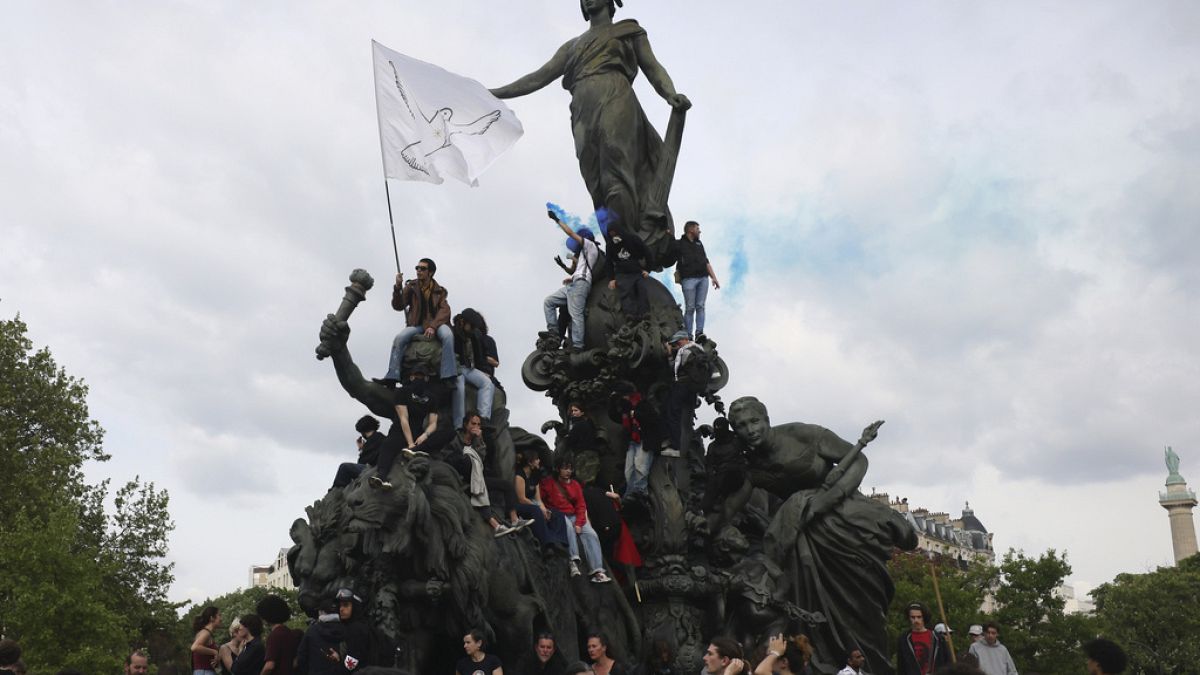
Many left-wing contenders didn’t miss the opportunity to attend the traditional May Day protest in Paris, while the far-right politician Jordan Bardella, currently leading the polls, announced the rest of his candidate list in southwestern France.
The usual chants for higher salaries and equal pay echoed across the streets of Paris this Wednesday during the traditional May Day labour rights march.
Ten of thousands of protestors took to the streets of the French capital against a backdrop of new demands such as peace in Gaza and against the upcoming Paris Olympic Games.
But with less than six weeks left before the European elections on 9 June, the event turned into a highly political one.
Many left-wing candidates didn’t miss the opportunity to present their campaign, all vying for attention.
Representing the Communist party for the EU elections, Léon Deffontaine, the 28-year-old candidate is focusing his campaign on energy bills — a topic that catalysed numerous protests in France and Europe since Russia’s full-scale invasion of Ukraine.
“The first measure I want to put in place is to take France out of the European electricity market to reduce energy bills. Today, we’re paying far more than the price we pay to produce electricity,” he told Euronews.
Others emphasised the importance of protesting the rise of the far-right, currently leading the polls, represented by Jordan Bardella of the Rassemblement National party (RN).
“May 1st is also an opportunity to remember that we must always fight against these anti-democratic, anti-republican parties that unfortunately swarm our country,” said Marie Toussaint, leader of the Green Party for the 9 June elections.
According to a poll by IPSOS ordered by Euronews, Macron’s centrist alliance Renaissance is lagging by 15 points behind Bardella’s party.
Meanwhile, in the southwestern city of Perpignan, Jordan Bardella gathered more than 2,000 people to announce his party’s first 35 candidates for the elections.
These include candidates such as Fabrice Leggeri, ex-boss of Frontex, the European Border and Coast Guard Agency.
End of April, two NGOs filed a civil complaint against Leggeri accusing him of being complicit in crimes against humanity for enabling ‘pushback’ of boats full of illegal migrants between 2015 and 2022.
Bardella’s move was highly criticised by left-wing parties, claiming the far-right politician was taking away the attention from worker’s issues.
“Taking advantage of May 1st to launch a campaign shows that he couldn’t care less about French workers,” reacted Léon Deffontaines, the Communist candidate.
In Saint-Etienne (near Lyon), the head of the socialist party, Raphaël Glucksmann, was prevented from joining the march.
Multiple protesters threw paint and eggs at the EU election candidate, currently third in the polls after the far-right and Marcon’s centrist alliance.
In total, about 121,000 people marched across France according to the Ministry of the Interior, while the main labour union CGT claimed “more than 210,000” participated in the marches in the country.
World
New Russia sanctions target weapons development and countries assisting in sanctions evasion
WASHINGTON (AP) — The U.S. on Wednesday imposed new sanctions on hundreds of firms and people tied to Russia’s weapons development program, more than a dozen Chinese firms accused of helping Russia find workarounds to sanctions and individuals tied to the death of Russian dissident Alexey Navalny.
The sanctions imposed by the Treasury and State departments target Russia’s military-industrial base, chemical weapons programs and people and firms in third countries that help Russia acquire weapons components as its invasion of Ukraine has entered its third year.
Treasury Secretary Janet Yellen said the action “will further disrupt and degrade Russia’s war efforts by going after its military industrial base and the evasion networks that help supply it.”
The sanctions come as the Senate gave final approval to legislation barring imports of Russian uranium, boosting U.S. efforts to disrupt Russia’s war in Ukraine. President Joe Biden is expected to sign the bill into law.
About 12% of the uranium used to produce electricity at U.S. nuclear power plants is imported from Russia, according to the U.S. Energy Information Administration.
A spokesperson for the National Security Council said Wednesday that Biden, a Democrat, shares lawmakers’ concerns about U.S. reliance on Russia for low-enriched uranium to support its domestic nuclear fleet.
Included in Wednesday’s sanctions announcement are importers of cotton cellulose and nitrocellulose — used to produce gunpowder, rocket propellants and other explosives. Also included are Russian government entities and people tied to Russia’s chemical and biological weapons programs and firms related to Russia’s natural gas construction projects.
Russian President Vladimir Putin has repeatedly railed against several rounds of U.S. and Western sanctions, claiming last year that they are “illegitimate sanctions” on his country.
A group of 16 targets in China and Hong Kong, most of which are related to Russian procurement workarounds, are also included in the latest sanctions announcement.
Firms in countries including China, Azerbaijan, Belgium, Slovakia, Turkey and the United Arab Emirates are accused of helping Russia acquire technology and equipment from abroad. The penalties aim to block them from using the U.S. financial system and bar American citizens from dealing with them.
The sanctions come after Biden last week said he would immediately rush badly needed weaponry to Ukraine as he signed into law a $95 billion war aid measure that also included assistance for Israel, Taiwan and other global hot spots.
Yellen said with the sanctions and supplemental funding combined, “our support for Ukraine and our relentless targeting of Russia’s military capacity is giving Ukraine a critical leg-up on the battlefield.”
World
Indonesia’s Ruang volcano spits more hot ash after eruption forces schools and airports to close
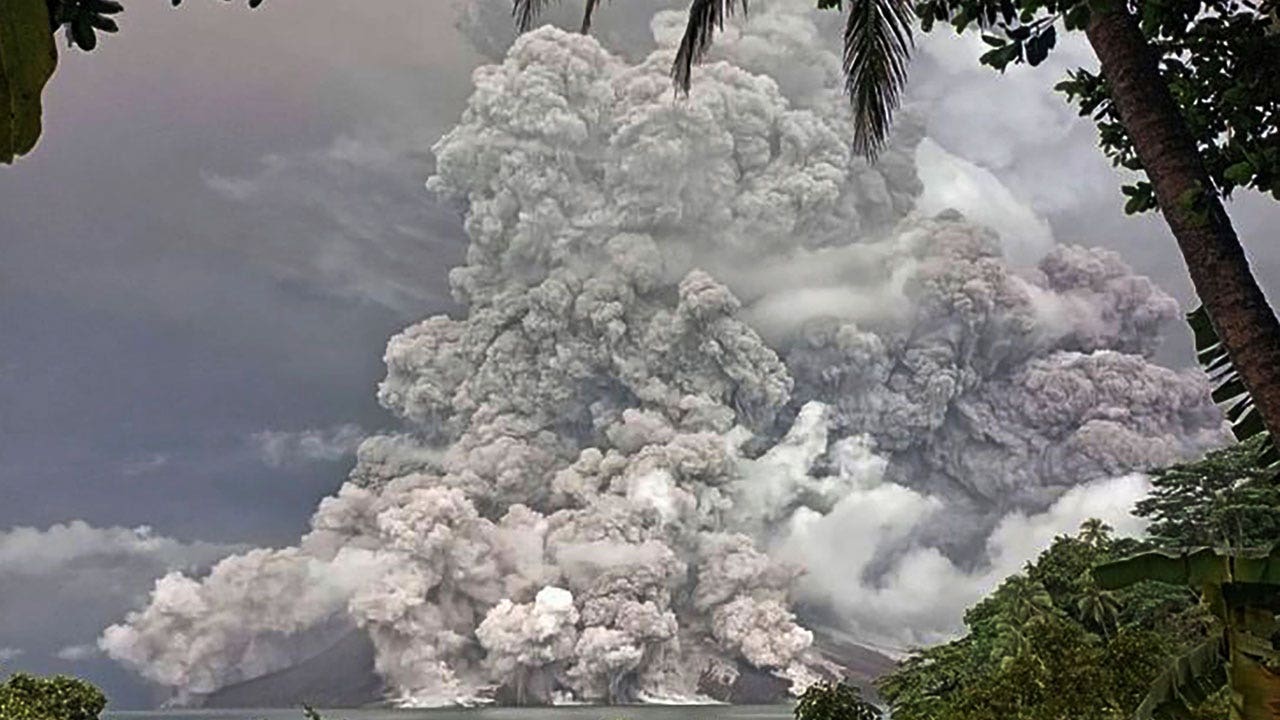
Indonesia’s Mount Ruang volcano spewed more hot clouds on Wednesday after an eruption the previous day forced the closure of schools and airports, pelted villages with volcanic debris and prompted hundreds of people to flee.
Seven airports, including Sam Ratulangi international airport in Manado, the capital of North Sulawesi province, remained closed after Tuesday’s eruption, the second in two weeks. Schools were shut to protect children from volcanic ash.
The volcano is on tiny Ruang Island, part of the Sitaro islands chain.
VIDEO SHOWS LIGHTNING SHOOTING FROM TOXIC ASH CLOUD DURING POWERFUL VOLCANIC ERUPTION IN INDONESIA
The Indonesian geological agency urged people to stay at least 4 miles from the volcano’s crater. It warned people on nearby Tagulandang Island, the closest to the volcano, of possible super-heated volcanic clouds from a further eruption and a tsunami if the mountain’s volcanic dome collapses into the sea.
Mount Ruang releases volcanic materials during its eruption on April 30, 2024, on Sulawesi Island, Indonesia. The volcano erupted on April 30 for a second time in two weeks, spewing ash more than a mile into the sky, forcing an airport to close and peppering nearby villages with debris. (Vulcanology and Geological Disaster Mitigation Center via AP Photo)
Video released by the National Search and Rescue Agency showed about a hundred villagers from Tagulandang Island being evacuated on a navy ship. Hundreds of others were waiting at a local port to be evacuated.
Agency spokesperson Abdul Muhari said 11,000 to 12,000 people living within a 4-mile danger zone would be taken to government shelters.
Tuesday’s eruption darkened the sky and peppered several villages with ash, grit and rocks. No casualties were reported.
After Mount Ruang’s April 17 eruption, authorities warned that a subsequent eruption might collapse part of the volcano into the sea.
Ruang is among about 130 active volcanoes in Indonesia. The archipelagic nation is prone to volcanic eruptions and earthquakes because of its location on the Pacific “Ring of Fire,” a series of fault lines stretching from the western coast of the Americas through Japan and Southeast Asia.
-

 Education1 week ago
Education1 week agoVideo: Dozens of Yale Students Arrested as Campus Protests Spread
-

 World6 days ago
World6 days agoHaiti Prime Minister Ariel Henry resigns, transitional council takes power
-

 News7 days ago
News7 days agoLarry Webb’s deathbed confession solves 2000 cold case murder of Susan and Natasha Carter, 10, whose remains were found hours after he died
-

 Politics1 week ago
Politics1 week agoFetterman hammers 'a–hole' anti-Israel protesters, slams own party for response to Iranian attack: 'Crazy'
-

 World1 week ago
World1 week agoPeriod poverty still a problem within the EU despite tax breaks
-

 World7 days ago
World7 days agoUS secretly sent long-range ATACMS weapons to Ukraine
-

 News6 days ago
News6 days agoFirst cargo ship passes through new channel since Baltimore bridge collapse
-

 World1 week ago
World1 week agoTurkey’s Erdogan meets Iraq PM for talks on water, security and trade

